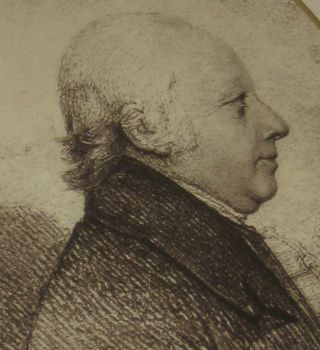Beaufort, Daniel Augustus (Clergyman / Architect)

Daniel Augustus Beaufort 1739-1821
Daniel Agustus Beaufort was the father of the hydrographer from Navan Sir Francis Beaufort.
Clergyman and amateur architect, who designed or improved several houses and churches. Daniel Augustus Beaufort was born in London in 1739, the only child of Daniel Cornelius Beaufort, a Huguenot refugee and Calvinist minister, and his wife, Esther Gougeon, from La Rochelle.
His father moved to Ireland under the auspices of the Earl of Harrington, who became Lord Lieutenant in 1747, and was appointed rector of Navan, Co. Meath.
Daniel Augustus, after graduating from Trinity College, Dublin, in 1759, was ordained in 1763 and succeeded his father as rector of Navan in 1765, holding the living until 1818. In 1767 he married Mary Waller of Allenstown, by whom he had seven children; his eldest surviving daughter, Fanny, married Richard Lovell Edgeworth. In 1790 he was presented by John Foster to the vicarage of Collon, Co. Louth. He died in 1821.
Beaufort was a man of wide interests which included architecture, topography and agriculture. The Royal Irish Academy owed its foundation in a great measure to him. His interest in architecture from an early age is evinced by the fact that he subscribed to the Rev. John Payne's, Twelve Designs of Country-Houses, which was published in 1757. His design for Collon church (1811-13), inspired by King's College chapel, Cambridge, is probably the best known of his architectural enterprises.
References:
All information in this entry is from C.C. Ellison, The Hopeful Traveller: the life and times of Daniel Augustus Beaufort (Kilkenny: Boethius, 1987), which includes a select bibliography.
Other accounts of Beaufort's life may be found in the Oxford DNB, W.G. Strickland, A Dictionary of Irish Artists (1913) and the entry by Linde Lunney in Dictionary of Irish Biography, ed. by James McGuire and James Quinn, 9 vols. (Cambridge University Press, 2009), 396-7.
Source: Irish Architectural Archive. Dictionary of Irish Architects 1720 - 1940.